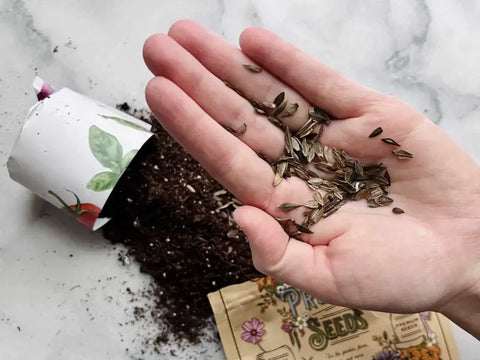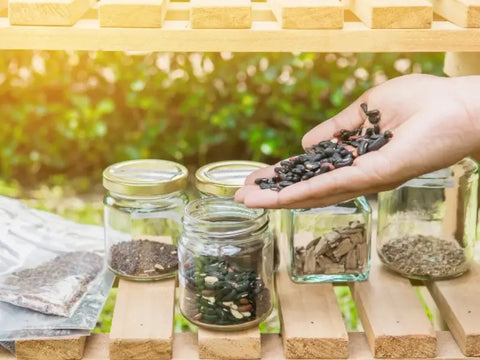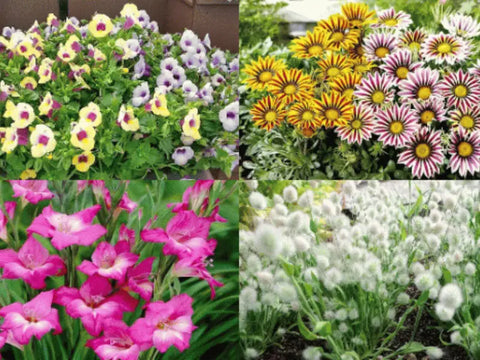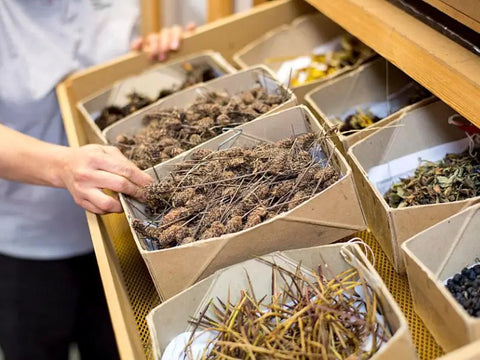A Beginner’s Guide to Harvesting Flower Seeds
Flowers for Harvesting Seeds: A Beginner's Guide to Starting Your Own Garden
Harvesting Seeds
Gardening is a fulfilling hobby that can bring joy and beauty to your life. One of the most rewarding aspects of gardening is being able to harvest seeds from your flowers and use them to grow new plants.
If you're new to gardening and interested in harvesting flower seeds, this guide is for you. In this article, we'll discuss the best flowers for harvesting seeds and provide some tips on how to get started with your own garden.

I. Benefits of Harvesting Seeds
Harvesting seeds from flowers offers many benefits for gardeners. Here are some of the top advantages of seed harvesting:
- Cost-effective: Purchasing new seeds every year can be costly. By harvesting seeds from your flowers, you can save money and reduce your garden expenses.
- Continuous supply: Harvesting seeds allows you to have a continuous supply of your favorite flowers. Once you have collected and stored the seeds properly, you can plant them again next season and enjoy the same beautiful blooms.
- Plant selection: By selecting and harvesting seeds from the best-performing plants in your garden, you can ensure that you are planting the best possible varieties for your climate and soil. This will increase the chances of a successful and bountiful garden.
- Preservation: Harvesting seeds from flowers also helps to preserve heirlooms and rare plant varieties. By growing and saving seeds from these plants, you can help to maintain genetic diversity and prevent these plants from becoming extinct.
- Educational: Harvesting seeds is also an educational process, especially for children. It allows them to learn about the life cycle of plants and the importance of conservation.

II. Top 8 Flowers for Harvesting Seeds
Here are top 8 best flowers for harvesting seeds to get started with your own garden:
1. Sunflowers
Sunflowers are a popular choice for seed harvesting because they produce a large number of seeds, which are easy to collect. Sunflowers come in different sizes and colors, making them a versatile addition to any garden. The large, bold blooms make a statement in any garden bed, and the seeds are great for snacking on or using in cooking.
2. Marigolds
Marigolds are easy to grow and produce seeds that can be saved for future planting. They come in different sizes and colors and are known for their pest-repelling properties. Marigolds can also be used in companion planting to deter pests from other plants in the garden.
3. Zinnias
Zinnias are known for their vibrant colors and long-lasting blooms, making them a popular choice for gardeners. They are easy to grow and produce a large number of seeds, making them a great choice for mass plantings. Zinnias are also a favorite of pollinators like butterflies and bees.
4. Poppies
Poppies are a beautiful addition to any garden and produce seeds that can be used for cooking or planted in the garden. They come in different sizes and colors and are known for their delicate petals. Poppies are also used in herbal medicine and have a long history of use in traditional medicine.

5. Nigella
Nigella, also known as love-in-a-mist, is a delicate flower that produces unique seed pods. The seed pods can be used for decorative purposes or saved for future planting. Nigella also has a long history of use in traditional medicine for its anti-inflammatory properties.
6. Sweet Peas
Sweet peas are fragrant flowers that produce seeds in pods. The seeds can be saved for future planting and come in different colors and sizes. Sweet peas are also a favorite of pollinators and are a great addition to any garden bed.
7. Cosmos
Cosmos are easy to grow and produce seeds that can be saved for future planting. They come in different sizes and colors and are known for their daisy-like blooms. Cosmos are also a favorite of pollinators like butterflies and bees.
8. Cleome
Cleome, also known as spider flower, produces unique seed pods that can be used for decorative purposes. The seeds can also be saved for future planting. Cleome is also used in herbal medicine for its anti-inflammatory and analgesic properties.
III. How to Grow Flowers for Harvesting Seeds
Once you've selected your flowers, it's time to start growing them! The specific steps you'll need to take will vary depending on the type of flower you're growing, but here are a few general tips to keep in mind:
- Start your seeds indoors: To give your plants a head start, you can start your seeds indoors in seed trays or small pots. This will help ensure that your plants are strong and healthy before you transplant them outdoors.
- Choose a sunny location: Most flowers need plenty of sunlight to grow and produce seeds. Choose a location that gets at least 6-8 hours of direct sunlight each day.
- Water regularly: Most flowers need regular watering to thrive. Be sure to water your plants deeply and consistently to keep them healthy.
- Fertilize as needed: Depending on the type of flower you're growing, you may need to fertilize your plants periodically to ensure healthy growth and seed production.
- Harvest the Seeds: Cut the seed heads off the plant and place them in a paper bag or a bucket. Allow the seed heads to dry completely before removing the seeds.
IV. Harvesting and Storing Flower Seeds: A Comprehensive Guide for Gardeners
Once your flowers have bloomed and begun to dry out, it's time to start harvesting your seeds. Here are the general steps you'll need to follow:
1. Wait for the flowers to dry
Most flowers need to dry out completely before you can harvest their seeds. This may take anywhere from a few weeks to a few months, depending on the plant.
2. Cut off the seed heads
Once your flowers have dried out, you can cut off the seed heads and place them in a paper bag or envelope.

3. Separate the seeds
To separate the seeds from the seed heads, you can gently rub or shake the heads until the seeds fall out. Alternatively, you can use a fine mesh strainer to sift out the seeds.
4. Store your seeds
Once you've separated the seeds, you'll want to store them in a cool, dry place. Be sure to label your seeds with the type of flower and the date they were harvested, so you can keep track of them easily.
V. Conclusion
Harvesting seeds is a fun and rewarding way to get started with gardening. By choosing the best flowers for harvesting seeds and following the tips in this guide, you'll be well on your way to creating a beautiful garden that you can enjoy for years to come. Don't forget to check out The Rike for high-quality seeds and other gardening supplies to help you get started!





Leave a comment